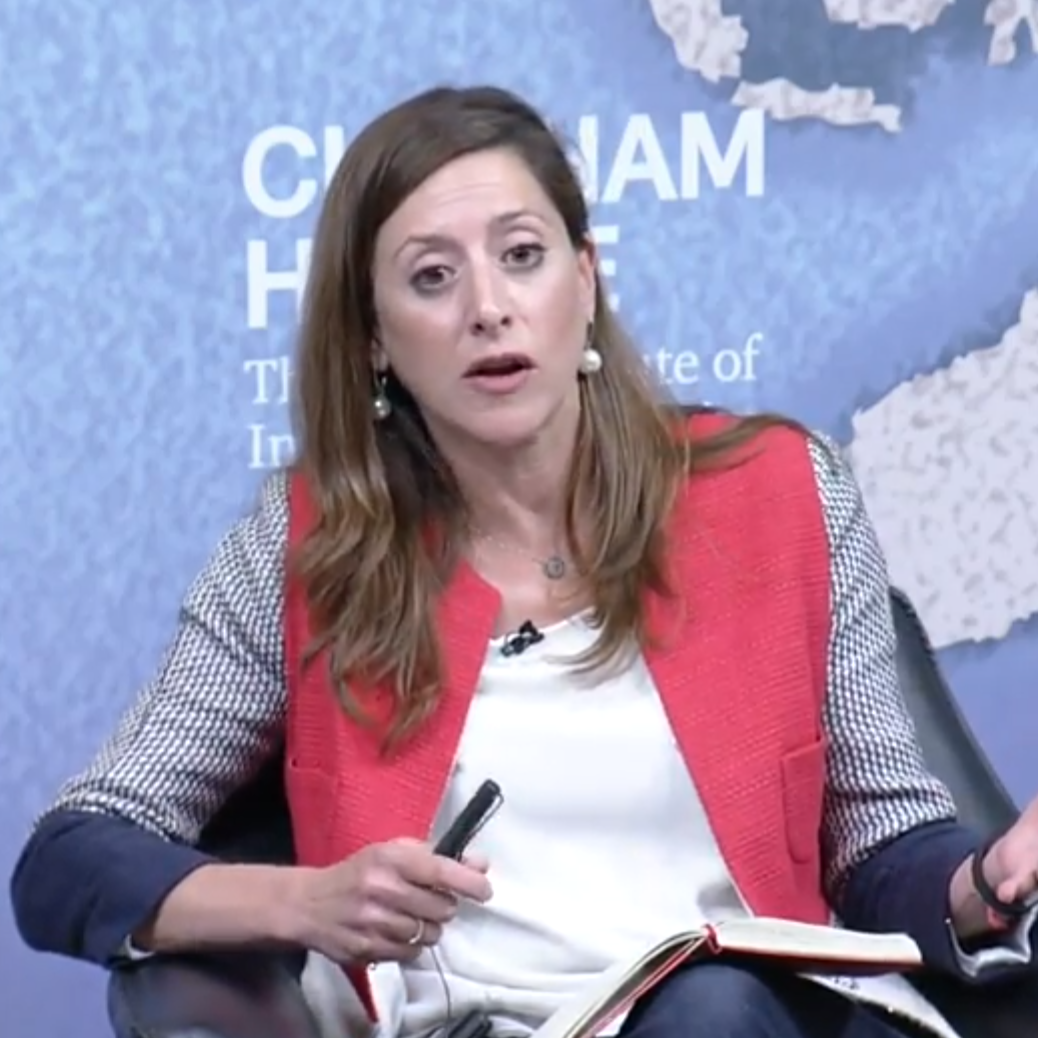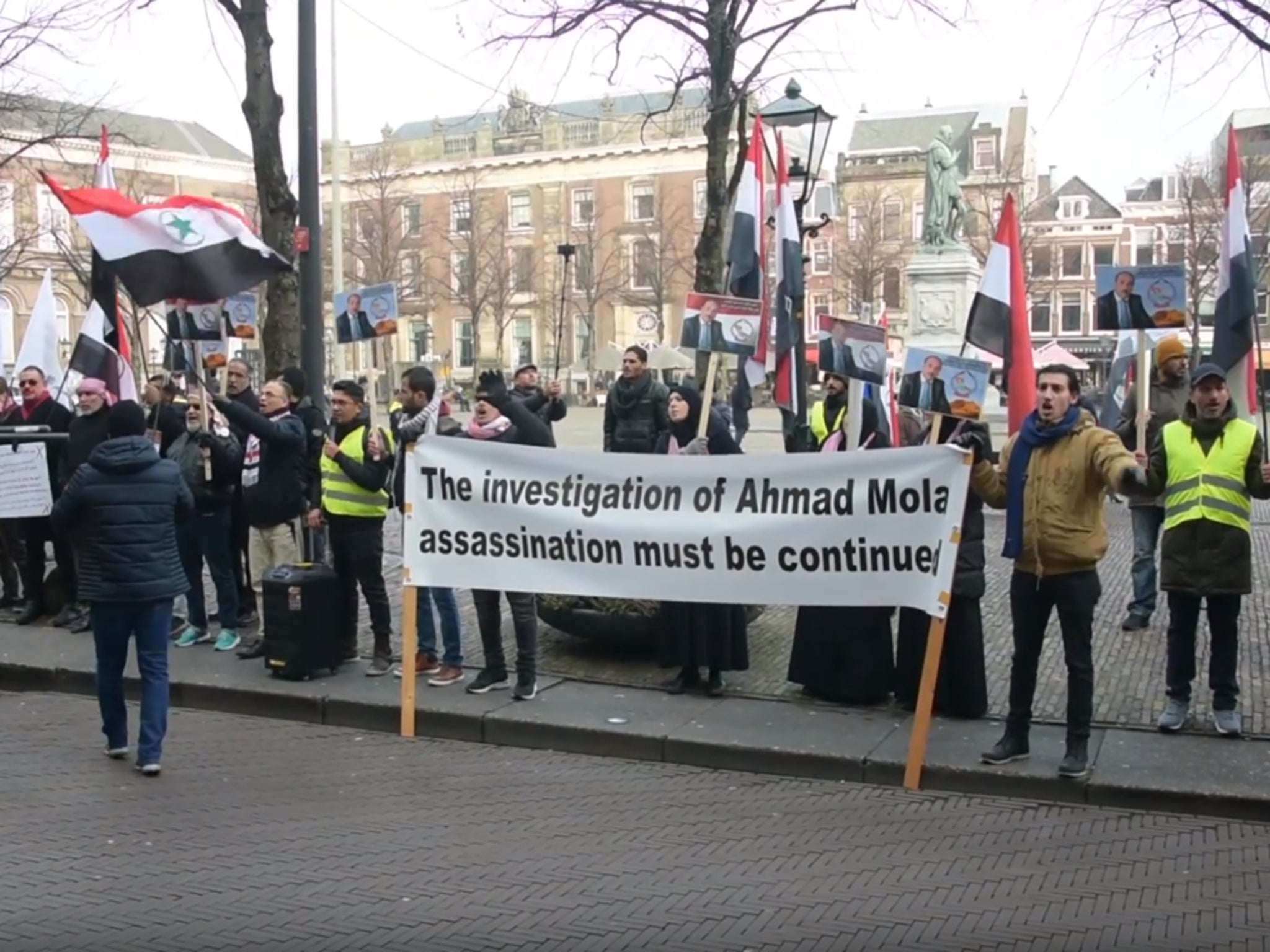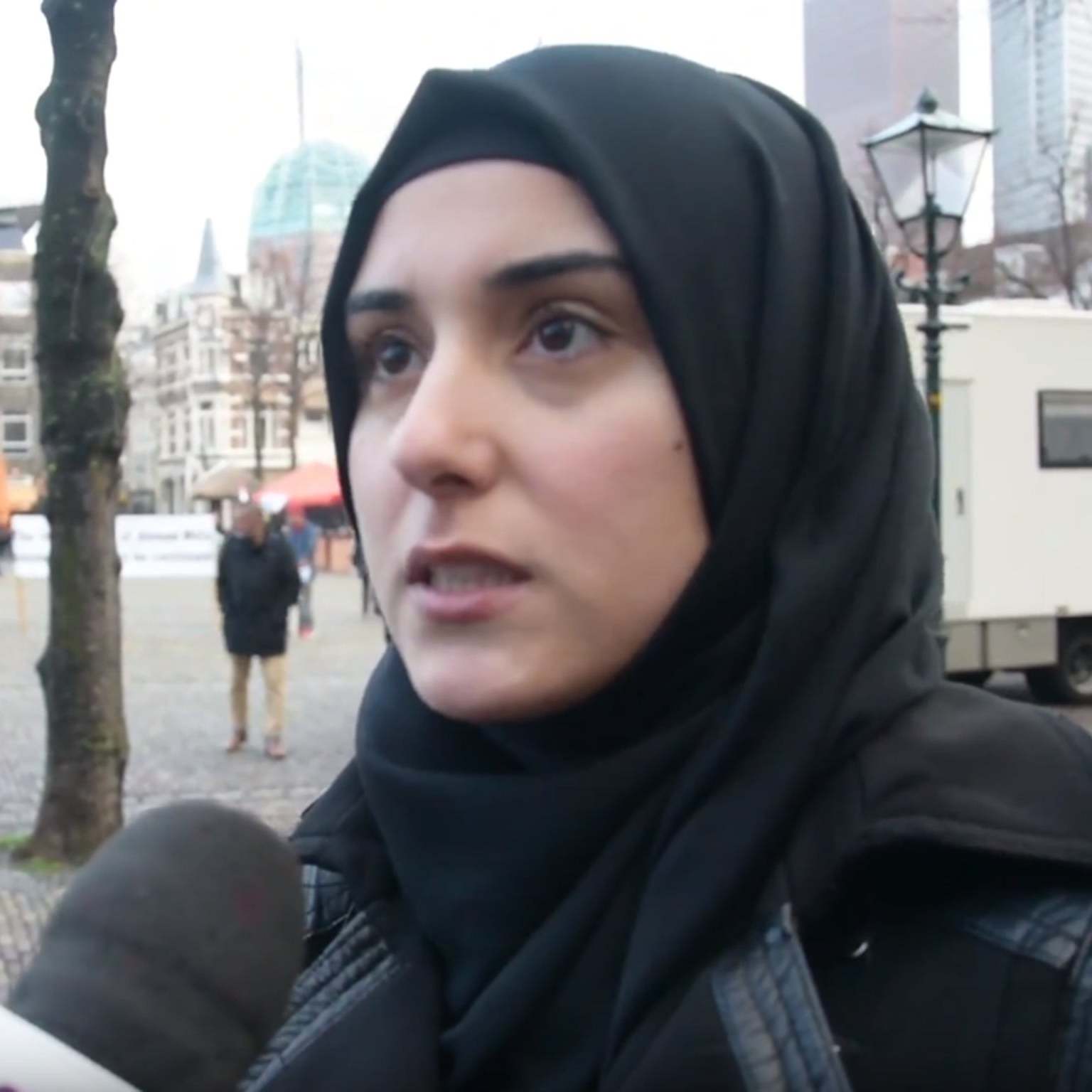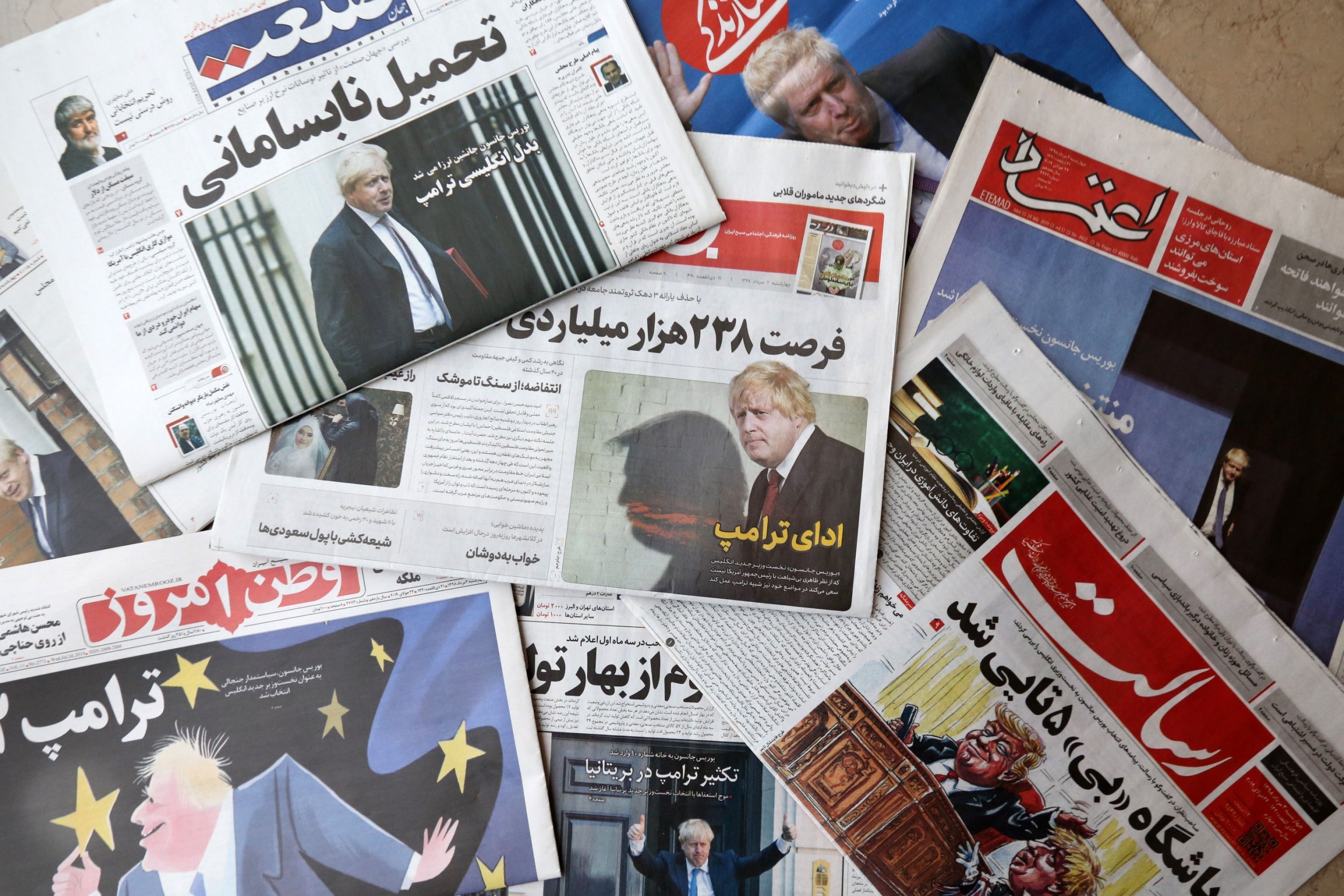Gunmen, bomb plots and secret networks: Inside Iran’s alleged campaign of terror in Europe
As tension between Iran and the White House continues to rise, European governments fear acts of Iranian aggression on their soil. Is there a shadowy network of operatives at work? Borzou Daragahi investigates


Everywhere Yaghoub al-Tostari goes, an officer from Denmark’s spy service follows him. Wearing an earpiece and armed with a handgun, the official keeps an eye not just on the Arab-Iranian activist, but on those around him – a man lingering on a street corner, a motorcyclist carrying a passenger stopped next to them at the traffic light. When Tostari has an appointment, his driver circles around seemingly at random before dropping him off. If a stranger stares at him too long at a restaurant or on the street, or appears to be listening in to his conversation, the guard asks them for identification. Tostari’s house in the Copenhagen area is under constant watch. And when Tostari travels to another country, local security services take over.
Their worry is that an agent of the Islamic Republic of Iran will try to shoot Tostari dead, as they have other members of his Arab opposition group, the Arab Struggle Movement for the Liberation of Ahvaz (ASMLA), and other opponents of the regime in Tehran living in Europe. “We must never be out of the eye of their security officials,” Tostari says in an interview. “Even if I go to a hotel they book a room next to you. When we go somewhere, we drive around and look before stopping. It’s the highest level of security possible.”
European officials are struggling to maintain diplomatic ties with Tehran as tensions rise over US-imposed sanctions that are diminishing Iran’s adherence to the landmark 2015 nuclear deal and spiking military tensions in the Persian Gulf. Officials in London, Paris, and Berlin and other western capitals are stuck between a White House that is pressuring them to isolate Iran and Tehran, which is demanding they do more to sustain a deal that they consider a landmark diplomatic achievement.
But behind the scenes, even as they continue regularly meeting with Iranian officials, European diplomats and intelligence officials also anticipate more attacks allegedly perpetrated by Tehran regime enforcers or hired hands on European soil. They are so concerned that Iran will assassinate or bomb opposition groups that they now give ASMLA 24-hour protection. Alleged operations against dissidents in Iran have been tied to France, Germany, Netherlands, Denmark, Austria, Belgium, Sweden. Norway, and Luxembourg, suggesting the outlines of a widespread Iranian clandestine network throughout Europe.

Iran has been accused of being behind a purported plot in Albania, where an exiled opposition group has built a stronghold, and suspected in Turkey, where a television executive who ran afoul of the regime was gunned down in 2017 in what appeared to be a professional assassination. Iranian officials have strenuously denied any involvement in the assassinations or bomb plots, accusing the country’s many international enemies of framing it. But those briefed by current and former Iranian diplomats say that even some Tehran officials are worried about the use of diplomatic outposts by shadowy figures in the security services.
Iran has a history of conducting such operations in Europe but the plots peaked in the 1990s, fading away in the years after the victory of the reformist president Mohammad Khatami in 1997
Tostari says several investigations are being pursued by authorities in Sweden and Denmark connected to alleged plots against his group that have yet to be publicly disclosed. Iran has a history of conducting such operations in Europe, but the plots peaked in the 1990s, fading away in the years after the victory of the reformist president Mohammad Khatami in 1997.
Intelligence professionals, diplomats and analysts claim there is strong evidence that the Iranian regime is once again stepping up such activities as part of the shadow war being waged between Iran and its adversaries abroad, which include various Iranian ethnic and political opposition groups and hardline regime-change advocates in western capitals.

“It’s really hard for European diplomats to separate their national interest of protecting the nuclear deal from the negative actions that Iran engages in abroad and on European territory,” says Sanam Vakil, an Iran scholar at Chatham House. “There’s a lot of frustration in all these capitals. These sort of actions make it harder to defend the deal and stand up for Iran in the face of American maximum pressure.”
Ahmed Mola Nissi was coming home from a funeral in a public housing complex, just a stone’s throw from the Central Station in The Hague, on a grey, rainy afternoon on 8 November 2017. Nissi and two colleagues emerged from two cars. Suddenly, as if from nowhere, a man in a Balaklava appeared. He evaded Nissi’s associates and shot the 52-year old in the back. He paused before he shot him twice more in the head, then waved his gun menacingly at Nissi’s associates. Seconds later a stolen black BMW pulled up and quickly drove him away. Nissi died at the scene.
The killing had an immediate impact. Such murders are rare in the Netherlands, and are usually associated with narcotics, trafficking or organised crime. But the case made international headlines when it emerged that that the victim was a longtime Arab-Iranian ethnic opposition leader, who had repeatedly been threatened by the Iranian regime. Nissi had fallen out with ASMLA in 2015 in a row over personalities rather than politics. This raised tension within the exile scene, and police initially investigated the possibility that he had been killed in a factional dispute. But nearly 14 months later, Dutch intelligence concluded that Iran had a “probable” hand in the “preparation or commission” of the assassination of Nissi, as well as a 2015 killing of a former dissident in the Amsterdam satellite city of Almere.

The Dutch foreign ministry described the killings as “hostile acts on EU territory” that prompted sanctions on Iranian officials and the expulsion of two Iranian embassy personnel from the Netherlands last year. “The Dutch general intelligence and security service (AIVD) conducted research that falls under their remit, and in so doing connected with human sources and friendly counter-intelligence and counter-terrorism services also looking into this,” one former western European intelligence official told The Independent. “They were able to establish clear links to Tehran in these two cases.”

The Netherlands collaborated with Denmark and France, also recent targets of Iranian operations abroad. Denmark narrowly averted an attack on Tostari’s office on 28 September 2018, which prompted the unprecedented shutting down of much of Denmark to traffic. During that alleged attack security forces gathered up Tostari and his family and the leader of ASMLA, Habib Jabouri, and rushed them to a safehouse, later arresting an Iranian-Norwegian former employee of Iran’s embassy in Oslo.
“He was in Denmark many times spying on us,” says Tostari.
France thwarted an alleged bombing attack on a gathering of a controversial Iranian opposition group and their Washington supporters in Paris. Among those arrested were a Belgian-Iranian couple and an Iranian diplomat accredited to Iran’s embassy in Vienna. In October, Albanian police disclosed that they had thwarted what they called a March 2018 attack planned on the compound of the anti-regime Mujahedin-e-Khalq Organisation, which is based in the western Balkan nation.
US officials say the alleged attacks show that even as Iran has mostly adhered to the terms of the nuclear deal, it has yet to give up its old habits. Europeans are baffled and frustrated by Iran’s actions, but have come to see two Iranian foreign-policy machines – the regular diplomatic corps and a shadowy network of clandestine operatives – working almost independently of each other.
“The actions are a reflection of different Iranian world views on the importance of Europe,” says Vakil. “The hardliners don’t really see the value of European diplomacy. Europe is perceived to be a weak actor that cannot stand up to the US and is home to many opponents of the regime. Harbouring these people exacerbates regime paranoia.”
Iran has denied involvement in the operations. Iranian officials publicly and privately blast any hint that diplomatic outposts are being used to plan and stage operations in Europe. But experts say the manoeuvres are part of what Tehran sees as a response to covert foreign activity on its soil, including an alleged CIA ring that it claims it has busted and an alleged plot to assassinate Iranian nuclear scientists.
Iran argues that there is no evidence of a clear-cut connection to attacks or attempted attacks in the Netherlands and Denmark, and it denies any role in the thwarted Paris attack, arguing it’s based on fabricated evidence. Dutch authorities say the criminal investigations are continuing but that culpability in crimes performed by such clandestine services must be determined by different standards.
The hardliners don’t see the value of European diplomacy. Europe is perceived to be a weak actor that cannot stand up to the US and is home to many opponents of the regime. Harbouring these people exacerbates regime paranoia
“The appraisal of evidence in the context of the criminal justice system differs from the appraisal of intelligence obtained by the intelligence services,” says the Dutch foreign ministry. “So far, the ongoing criminal investigations have not confirmed, in a criminal law sense, intelligence that suggests interference by Iran.”
Half-hearted attempts by governments in Austria and elsewhere to go after Iran’s operations inside Europe, including its network of Imam Ali mosques and cultural centres allegedly used to recruit operatives and spy on exile communities, have fallen by the wayside, said one diplomat. In a Europe that is generally hostile to Trump, few from either the left, right or centre want to appear to be doing the bidding of Washington. One Danish security analyst, describing the reaction of European officials to the antics of the White House during Nato summits, said: “They are in absolute shock about the behaviour of the Trump administration,” he said.

Whether in Brussels, London or Paris, European diplomatic and security officials are stuck between Iran, which they see as a long-term project to manage, and a US administration demanding adherence to their “maximum pressure” campaign. “Their hands are tied,” says Vakil. “They feel they have to play a mediating role in terms of balancing between Iran and the US. Because they have a grey view of Iran, they can compartmentalise.”

Raghdan al-Khazali was an Iraqi Arab living in Sweden, and appeared to be sympathetic to ASMLA and the Iranian Arab cause. He introduced himself as a journalist from the news website Euro-Times, that serves the Arab community in Scandinavia. He also attended ASMLA conferences in The Hague in 2015 and 2017. It is not easy to gain the trust of ASMLA. They are under constant threat. A torrent of menacing emails and text messages arrive in their inboxes. “They say they will come, and cut our tongues out,” says one young member. Police installed a panic button in their offices in The Hague. A police substation lies 300 meters away.
But Khazali was friendly, and managed to smooth his way into the group’s inner-sanctum by charming and flattering members. He promised to write a big story, and wanted to photograph the group’s Ahwazona television channel. He suggested he was opposed to the regime in Tehran, and its influence in his native Iraq. To save money, he asked to sleep over at the home of one of the group’s leaders during his visits. ASMLA activists became alarmed some months later when they spotted a photograph of Khazali on social media hobnobbing with members of an Iranian-backed Shia militia in southern Iraq. They immediately alerted the Dutch security services, who notified Sweden.
Khazali was arrested by Swedish authorities this year. His case remains under a gag order, while an investigation continues. But sources close to the investigation told The Independent that Swedish investigators discovered photos of ASMLA members’ homes, relatives, residential entrances and adjacent streets. One investigator also discovered an “x” on the post box outside one ASMLA leader’s home.
Tostari and other ASMLA members suspect Iran was sizing up potential targets, worried that the group was expanding ties to other ethnic opposition forces in the diaspora and inside the country. Iran, which is predominantly ethnic Persian, faces challenges from its Arab, Kurdish and Azeri minorities. It has been outraged over allegations that ASMLA was behind a series of attacks on Iran’s southwest, and criticised European governments for hosting the group. “Security officials keep getting new intelligence that they are after us. It’s still continuing,’’ says Tostari. “Why does Iran come after us? Because we started building ties with Kurds, Azeris, and Baluchis. They are afraid of us.”
Join our commenting forum
Join thought-provoking conversations, follow other Independent readers and see their replies
Comments